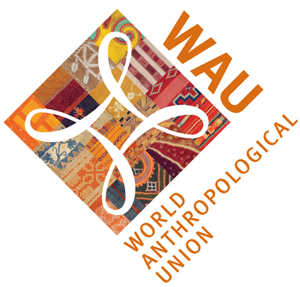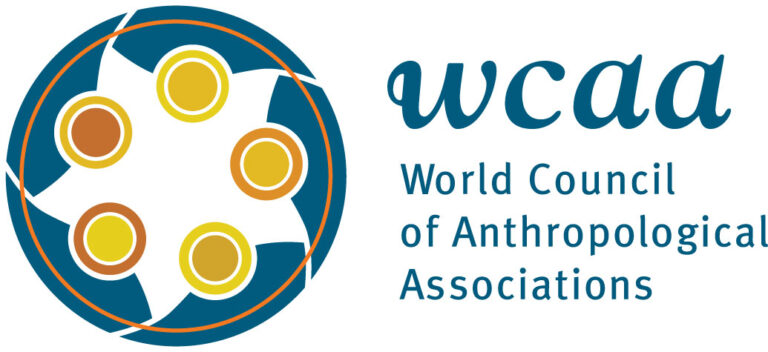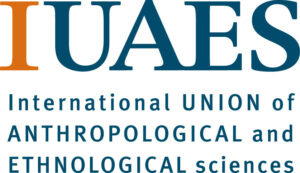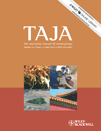
Nicholas A. Bainton, Chris Ballard and Kirsty Gillespie (2012). The end of the beginning? Mining, sacred geographies, memory and performance in Lihir. The Australian Journal of Anthropology, Vol. 23, pp, 22–49.
This article explores the critical ways in which the relationship between landscape and memory is mediated by performance—through song, dance, ritual and the movements of the living and the dead. In the Lihir group of islands, in Papua New Guinea, these acts of memorialisation are rehearsed on a remarkable stage, an involuted cosmography or sacred geography in which the cosmological point of origin, the sacred rock of Ailaya, is also the ultimate destination for all human and spirit forms. Spirit beings are held to have emerged from the Ailaya, spreading across the island group, their tracks charting the links amongst distant clan members and the networks of alliance between trading partners. It is to the Ailaya that the spirits of deceased Lihirians must return, following preparatory mortuary rites and sung along a route that recalls the spirit connections. This teleological process is mapped through an account of the performance of relationships between people and land, to which an additional layer of complexity is added by the presence of a giant gold mine, in which the Ailaya is again the central feature.

Suzanne Brenner (2011). Private Moralities in the public sphere: Democratization, Islam, and gender in Indonesia. American Anthropologist, Vol. 113, No. 3, pp. 478–490.
Keywords: Islam, democratization, gender, Indonesia, morality
Over the past two decades, Indonesia has been transformed socially and politically by two major movements: the Islamic movement and the democratization movement. One point of convergence between these two movements has been a strong concern with establishing moral ascendancy over the perceived immorality of the previous regime and with building a new moral order as the foundation of a democratic nation. In this article, I examine how issues of gender and sexuality have become key arenas in which battles over competing views of democratization as well as Islamic morality are waged. I argue that amid an increasingly politicized division between liberal and conservative Islam, the struggle to gain symbolic control over public morality, and to acquire the political power that accompanies it, has rested in part on ideological contests between Muslim liberals and conservatives over the shifting boundaries and meanings of public and private in Indonesian society.

Hassen Chaabani (2012). Insights on the history of anthropology: its emergence in the wider Middle East before it existed as a discipline. International Journal of Modern Anthropology, Vol. 5, pp. 80-87.
Keywords: History of anthropology, Wider Middle East, Founders of anthropology, Abu Rayhan al-Biruni, IbnKhaldoun, Global anthropology
Before anthropology existed as a discipline, important grounding relating to different aspects of the study of humanity were present in many ancient writings of some Islamic Renaissance scholars in the wider Middle East such as Abu Rayhan al-Biruni, a Persian scholar (973-1048) and IbnKhaldoun, a Tunisian scholar (1332-1406). In this paper I present briefly the scientific and cultural products of these scholars particularly those concerning anthropological subjects. I present also some important anthropological concepts and conclusions presented in their famous studies which represent the foundation of anthropology. Thus, this paper represents a contribution to the universal history of anthropology. The knowledge of this history and that of previous and current problems specific to anthropology would help to develop a real global anthropology.

Chip Colwell-Chanthaphonh (2011). ‘The disappeared’. Power over the dead in the aftermath of 9/11. Anthropology Today, Vol 27, No. 3, pp. 5-11.
The issue of disposition of and control over human remains is a sensitive subject in all human societies, usually marked by taboos and rituals. That the unidentified human remains from the World Trade Center destruction should generate controversy is therefore not surprising. Without the possibility of burial or cremation in the usual way by family, these remains point to disappeared individuals, left in limbo as the result of a terrorist attack.

Luiz Fernando Dias Duarte (2011). Damascus in Dahlem. Art and nature in Burle Marx’s tropical landscape design. VIBRANT – Virtual Brazilian Anthropology. Vol. 8, no. 1, pp. 496-510.
Keywords: Nation, art, landscape, nature, civilization
One of the main features of Burle Marx’s biography is the idea that he discovered the aesthetic qualities of tropical flora that came to characterize his famous new approach to landscape design during a juvenile visit to Berlin-Dahlem Botanical Gardens, in the 1920s. Having been born [1909] in São Paulo, he is supposed not to have had previous contact with tropical spontaneous richness, thanks to the Europeanized taste that prevailed there. As any young member of the local elites with a disposition towards an artistic career, his family trip to Europe was an essential condition for close contact with the avant-garde tendencies of early 20th century. Ever since the 19th century, that pattern of contact of Brazilian prospective artists with ‘civilization’ had entailed the emergence of different trends of ‘nativist’ renderings of metropolitan taste. In such a context, the peculiar aspect of RBM’s European début was the ‘discovery’ of tropical nature and not only that of the formal, ‘universal’ language of high culture. The discussion of what is involved in this game of mirrors is the aim of this paper.
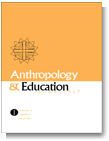
Gilmore, Perry (2012). We Call It “Our Language”: A Children’s Swahili Pidgin Transforms Social and Symbolic Order on a Remote Hillside in Up-Country Kenya. Anthropology & Education Quarterly, Vol. 42 (4), pp. 370–392.
Keywords: Swahili pidgin, communicative competence, child language identity and ideology, language origins and invention.
This study describes a rare Swahili pidgin created by two five-year-old boys, one American and one African. The discussion examines the linguistic and social factors affecting the “origins, maintenance, change and loss” (Hymes 1971) of their language and the place it created for their friendship. This place, constructed by and through language, both held and projected their new identities, interrupting the harsh hegemony of colonial racism and inequality that surrounded them.

Marcia Langton (2011). Anthropology, Politics and the Changing World of Aboriginal Australians. Anthropological Forum: A Journal of Social Anthropology and Comparative Sociology, 21:1, 1-22.
Keywords: Anthropologists; Aboriginal People; Self-Determination; Economic Development; Human Rights
Essentialism has become a fundament of Aboriginal activism in modern Australia, with the result that informed, first-hand empirical observations of anthropologists who chronicle the deterioration of life in many Australian Aboriginal communities tend not to be taken seriously simply because their authors are not ethnically ‘Aboriginal’. This problem has contributed to a relative absence of analysis of the economic history of Aboriginal Australians, fostering instead an approach that prioritises the political and cultural rights of indigenous people above the kinds of life-enhancing circumstances that are necessary for them to participate in the economy and create wealth. This kind of essentialism has also resulted in a disregard for the rights of indigenous people as individuals, rather than as communities seeking self-determination, especially with regard to the rights of women and children. The work of Professor Ronald M. Berndt and Dr Catherine Berndt should serve as an example for today’s anthropologists in encouraging broader expert participation in debates on indigenous disadvantage, despite the threat of admonishment or criticism by Aboriginal rights activists wielding the weapon of racial priority or essentialism.
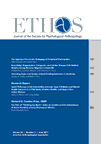
Akiko Hayashi and Joseph Tobin (2011). The Japanese preschool’s pedagogy of peripheral participation. ETHOS, Vol. 39, No. 2, pp. 139–164.
Keywords: Peripheral participation, Japan, preschool, gyarari, seken
This article examines Japanese teachers’ beliefs about children’s peripheral participation in emotional interactions in the classroom, and especially in fights. The article is based on a reanalysis of scenes of fighting in Japanese preschools from Tobin and colleagues’ 2009 book and video, Preschool in Three Cultures Revisited. The reanalysis shifts the focus of attention from the protagonists in the fights, who occupy the center of the video frames, to the children on the margins. Japanese teachers have an emic cultural vocabulary for conceptual- izing such peripheral participation, including the terms gyarari (gallery), gaiya (outfielders), seken (the generalized audience), and mawari no ko (the children around). Our analysis suggests that Japanese preschool teachers believe that in responding to children’s fights their goal should be to give not only the protagonists but the class as a whole opportunities to experience emotions and to cultivate a sense of collective responsibility for events in their classroom community.

Juliana Mansvelt and Theodore E. Zorn (2012). The problems and possibilities of mobility for home-based elders in New Zealand. Sites: New Series, Vol. 9, no. 1, pp. 107-132.
Physical mobility can be a means of social and spatial exclusion. Qualitative interviews with 19 home-based elders aged 65-96 about their interactions with a range of public and private service providers show that concepts related to mobility are not dependent on the physical ability to move, but centre on the ways in which people are able to, as part of socio-technical networks, connect with others and make things flow through these connections. These home-based elders, who self-identified as needing assistance to leave home, are able to maintain a flow both within and across the boundaries of home. Highlighting three analytical themes (getting out, letting in and finding a way), we suggest that home-based elders are not inactive or immobile; rather their mobile practices centre on connection rather than corporeal travel. A relational view of mobility as ‘connection’ which considers the role of non-human entities in enabling and disabling forms of mobility consequently assists us to under- stand the problems and possibilities of being differently mobile.

Séamas Ó Síocháin (2011). ‘More power to the Indians’: Roger Casement, the Putumayo, and indigenous rights. The Irish Journal of Anthropology, Vol. 14, no. 2, pp. 5-12.
Keywords: Casement, Putumayo, Empire, Race, Indigenous Rights
Physical mobility can be a means of social and spatial exclusion. Qualitative interviews with 19 home-based elders aged 65-96 about their interactions with a range of public and private service providers show that concepts related to mobility are not dependent on the physical ability to move, but centre on the ways in which people are able to, as part of socio-technical networks, connect with others and make things flow through these connections. These home-based elders, who self-identified as needing assistance to leave home, are able to maintain a flow both within and across the boundaries of home. Highlighting three analytical themes (getting out, letting in and finding a way), we suggest that home-based elders are not inactive or immobile; rather their mobile practices centre on connection rather than corporeal travel. A relational view of mobility as ‘connection’ which considers the role of non-human entities in enabling and disabling forms of mobility consequently assists us to under- stand the problems and possibilities of being differently mobile.
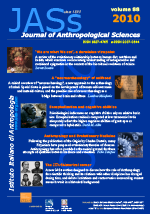
Telmo Pievani and Emanuele Serrelli (2011). Exaptation in human evolution: how to test adaptive vs exaptive evolutionary hypotheses. Journal of Anthropological Sciences, Vol. 89, pp. 9-23.
Keywords: Exaptation, Pre-adaptation, Spandrels, Adaptationism, Extended taxonomy of fitness, Operationality
Palaeontologists, Stephen J. Gould and Elisabeth Vrba, introduced the term “ex-aptation” with the aim of improving and enlarging the scientific language available to researchers studying the evolution of any useful character, instead of calling it an “adaptation” by default, coming up with what Gould named an “extended taxonomy of fitness” . With the extension to functional co-optations from non-adaptive structures (“spandrels”), the notion of exaptation expanded and revised the neo-Darwinian concept of “pre- adaptation” (which was misleading, for Gould and Vrba, suggesting foreordination). Exaptation is neither a “saltationist” nor an “anti-Darwinian” concept and, since 1982, has been adopted by many researchers in evolutionary and molecular biology, and particularly in human evolution. Exaptation has also been contested. Objections include the “non-operationalityobjection”.We analyze the possible operationalization of this concept in two recent studies, and identify six directions of empirical research, which are necessary to test “adaptive vs. exaptive” evolutionary hypotheses. We then comment on a comprehensive survey of literature (available online), and on the basis of this we make a quantitative and qualitative evaluation of the adoption of the term among scientists who study human evolution. We discuss the epistemic conditions that may have influenced the adoption and appropriate use of exaptation, and comment on the benefits of an “extended taxonomy of fitness” in present and future studies concerning human evolution.

Amy Pollard (2009). Field of screams: difficulty and ethnographic fieldwork. Anthropology Matters, Vol 11, No. 2, pp. 1-24.
Keywords: fieldwork, higher education
Ethnographic fieldwork can be a time of intense vulnerability for PhD students. Often alone and in an unfamiliar context, they may face challenges that their pre-fieldwork training has done little to prepare them for. This study seeks to document some of the difficulties that PhD anthropologists at three UK universities have faced. It describes a range of feelings as experienced by 16 interviewees: alone, ashamed, bereaved, betrayed, depressed, desperate, disappointed, disturbed, embarrassed, fearful, frustrated, guilty, harassed, homeless, paranoid, regretful, silenced, stressed, trapped, uncomfortable, unprepared, unsupported, and unwell. The paper concludes with a set of questions for prospective fieldworkers, a reflection on the dilemmas faced by supervisors and university departments, and a proposal for action.
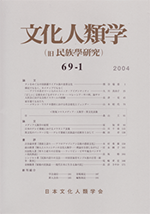
Nozawa Toyoichi (2010). Emergence of trance dance through face-to-face interaction. A case study of black Pentecostal churches in America. Japanese Journal of Cultural Anthropology, Vol 75(3), pp. 417-439.
Keywords: Trance dance, face-to-face interaction, American Blacks, Pentecostal churches, music
Black Pentecostal churches in America are known for their intensive use of music during worship services, including congregational singing and dancing. This paper deals specifically with their ritual trance dance, called shouting, and describes the micro interactions among congregations where it occurs. By doing so, I aim to discuss an important but usually overlooked aspect of the mechanism through which (possession) trance dance emerges.
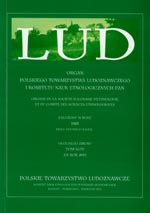
Magdalena Zowczak (2009). Anthropology, history, and the Ukrainian question. About the tactics of the borderland. Lud, Vol. 95, pp. 45-67.
Keywords: Cultural anthropology, history, borderland, Polish-Ukrainian relations, scientific politics
There is a clear rift between actual aims and the potential of cultural anthropology, as the discipline directed at critical and reflexive study of contemporaneity, and its place in university structures and state institutions in Poland. This phenomenon is accompanied by the stereotype of ethnology and anthropology in common sense, inherited from ethnography, which in the past time was entangled in the politics of “folk”. The author discusses the reasons for the classification of anthropology as an auxiliary science of history, asks questions about scientific politics and emphasizes the significance of an academic ethnographic laboratory as an original educational project. The author describes two examples presenting her experience of cooperation with historians. One is cooperation between the historians and the anthropologist at the Expert Committee of the Ministry of Education for the improvement of history and geography textbooks. The other is the cooperation between the anthropologist and the historian during the research project on contemporary cultural practices in the Polish-Ukrainian borderland. Both types of cooperation are linked by interest in the borderland, the concept which opens up a space for negotiations between anthropology and history. This concept has many meanings and is metaphorical, which could be a methodological trap. Therefore it was presented as the key category of those two specific projects. In the end the author describes her own research project as an attempt at the implementation of the critical anthropology of the borderland.
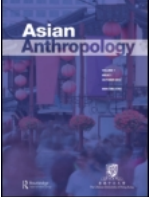
Zhou Lei & Duong Bich Hanh (2011): Sex Work in the Sino-Vietnamese Borderlands, Asian Anthropology, 10:1, 81-100.

Gourarier, Mélanie. 2011, "Négocier le genre? Une ethnologue dans une société d’hommes apprentis séducteurs (Negotiating Gender? An Ethnologist Works Embedded in a Society of Men Apprenticing Seduction)." Le Journal des anthropologues n°124-125, p.159-178.
Keywords: sex/gender, reflexivity, masculinity, negotiation, field, seduction
A young woman researcher had particular experience while conducting a study on an exclusively male population. Starting from there, the article questions the functions of the gender assignments endowed upon the researcher during her study, in order to fully integrate them into the process of understanding the data. The reflexivity analysis done concerning the researcher’s working path in the field hence allows approaching the upward hierarchic mobility system based on the progressive acquisition of “male skills,” a system which has structured the career path of the individuals within the reference group. In such a context, where gender identity is constructed, assignments to which the researcher is confronted depending on his or her gender make room for negotiation and proper organization of the study.
